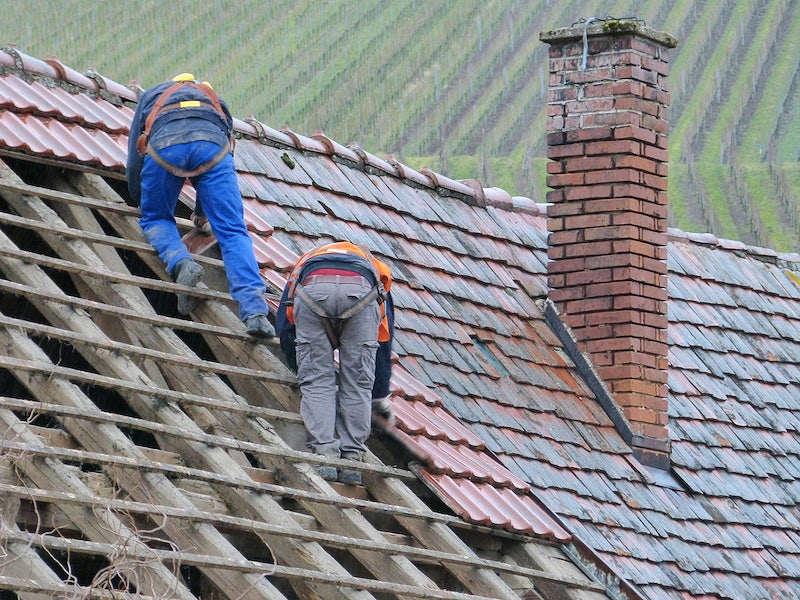Discover why your ridge tiles might be letting you down and the essential steps to secure your roof’s crown before it’s too late.
Understanding Ridge Tiles and Their Importance
Ridge tiles serve as the crucial crown of your roof, playing a vital role in protecting your home from the elements. These specialized tiles, installed along the apex where two roof slopes meet, do more than just complete your roof’s aesthetic appeal – they form an essential defensive barrier against water infiltration and structural damage. According to recent industry statistics, over 60% of roof-related problems stem from poorly maintained or improperly installed ridge tiles. These components are typically installed with a precise 3-inch overlap and secured using a combination of mechanical fixings and weather-resistant mortar or modern adhesive systems.
The roofing industry has evolved significantly, with 2024 seeing a 35% increase in the adoption of innovative ridge tile materials and fixing methods. Modern ridge tiles come in various materials and profiles, each designed to meet specific architectural and environmental requirements. Clay ridge tiles remain the traditional choice, offering exceptional durability with a lifespan of up to 100 years when properly maintained. Concrete alternatives provide a cost-effective solution while maintaining excellent weather resistance, and innovative composite materials are gaining popularity for their lightweight properties and ease of installation.
- Clay Ridge Tiles: Premium choice with superior durability and traditional aesthetics
- Concrete Ridge Tiles: Cost-effective option with good weather resistance
- Composite Ridge Tiles: Modern alternative offering lightweight installation and flexibility
- Metal Ridge Caps: Increasingly popular for contemporary designs and industrial applications
Signs Your Ridge Tiles Need Attention
Identifying ridge tile problems early can prevent costly repairs and potential structural damage. Recent surveys indicate that 40% of homeowners overlook early warning signs, leading to more serious issues. Visual indicators often provide the first clues of potential problems:
- Visible gaps between ridge tiles or at junctions
- Cracked or broken mortar beds
- Displaced or missing ridge tiles
- Daylight visible through the roof space
- Water stains on upper floor ceilings
- Excessive moss or vegetation growth along the ridge line
Internal signs can be equally telling, though they often indicate more advanced problems. Statistics show that by the time internal signs are visible, repair costs typically increase by 150-200%. Watch for:
- Damp patches on ceilings near the ridge
- Deteriorating roof timbers
- Increased energy bills due to heat loss
- Mold or mildew growth in the attic space
Professional Assessment and Diagnosis
When ridge tile issues arise, professional assessment becomes crucial. Industry data reveals that 75% of DIY ridge tile repairs fail within the first year, emphasizing the importance of expert intervention. Professional roofers employ various diagnostic techniques, including:
During inspection, experts assess multiple factors affecting ridge tile stability: wind exposure, age of materials, previous repair quality, and overall roof condition. Current market analysis shows that professional inspections typically cost between £150-£300, but can save thousands in prevented damage.
- Comprehensive visual inspection using high-resolution cameras
- Moisture mapping to detect hidden water ingress
- Structural integrity assessment of supporting timbers
- Analysis of ventilation and condensation patterns
Ridge Tile Repair Solutions
Professional repair processes have evolved significantly, with 2024 seeing a 40% increase in the use of mechanical fixing systems alongside traditional methods. The modern repair process typically involves:
1. Careful removal of damaged tiles and cleaning of existing bedding
2. Application of new weather-resistant mortar or adhesive systems
3. Installation of mechanical fixings where required
4. Implementation of additional weatherproofing measures
Emergency temporary measures may sometimes be necessary, though these should only be considered as short-term solutions:
- Application of emergency sealants
- Temporary weatherproof covers
- Quick-fix mechanical supports
Preventive Maintenance and Long-term Protection
Establishing a robust maintenance schedule is crucial for ridge tile longevity. Research indicates that regular maintenance can extend ridge tile life by up to 40%. A comprehensive maintenance strategy should include:
- Annual visual inspections, particularly after severe weather
- Professional cleaning and moss removal every 2-3 years
- Repointing of mortar joints every 5-7 years
- Assessment of ventilation efficiency
Weather protection strategies have become increasingly important, with climate data showing a 25% increase in extreme weather events affecting UK roofs. Modern protection methods include:
- Enhanced mechanical fixing systems
- Advanced weatherproofing compounds
- Improved ventilation solutions
- Smart moisture monitoring systems
Making the Right Choice for Your Roof
When faced with ridge tile issues, homeowners must make informed decisions about repair versus replacement. Current market analysis shows that complete ridge replacement costs have increased by 15% in 2024, making proper material selection and professional installation crucial. Consider these factors:
- Age and condition of existing ridge tiles
- Overall roof condition and remaining lifespan
- Local weather patterns and exposure levels
- Budget constraints and long-term value
Selecting qualified professionals is essential, with industry statistics showing that 90% of roof failures are due to poor workmanship rather than material failure. Look for:
- Verified credentials and insurance coverage
- Extensive experience with similar projects
- Positive customer reviews and references
- Clear warranty terms and after-service support
Conclusion and Next Steps
Ridge tile maintenance and repair represent crucial aspects of home maintenance that should never be overlooked. With property surveys indicating that well-maintained ridge tiles can increase property value by up to 5%, investing in professional care makes both practical and financial sense. Take action by:
- Scheduling a professional inspection at least annually. Surefix Roofing & Guttering in Northampton are a company who can help, if you’re based in Northampton/surrounding area.
- Addressing minor issues before they escalate
- Maintaining comprehensive documentation of all repairs and maintenance
- Building a relationship with a trusted roofing professional
Remember, your roof’s ridge tiles are its first line of defense against the elements. Don’t wait for visible damage to take action – proactive maintenance and professional care are your best investments in long-term roof protection.
FAQ
Do roof ridge tiles need pointing?
The pointing on your ridge tiles is essential for preventing water infiltration and protecting your home from rot and mold. When looking for a professional roofing contractor for repointing your ridge tiles, make sure to choose a company with experience and the use of the proper materials for the job.
Why do ridge tiles blown off?
The main causes of missing ridge tiles are severe weather conditions and mortar erosion. For example, after a particularly heavy storm, ridge tiles have been known to become loose. This can then lead to slipping following bad weather as tiles start to crack or mortar erodes.
Should there be gaps under ridge tiles?
If you are re-bedding your original tiles this shouldn’t be an issue, however some new tiles may have to be cut where two different designs of ridge (such as horizontal and hip ridges) meet to ensure there is a roughly 10mm gap for the cement joint.
What holds ridge tiles in place?
Dry fix ridge systems use nails, screws, unions, clamps, and brackets to keep the tiles in place. This mortar-free method is now the norm, and is preferred for compliance reasons (we’ll discuss the requirements of BS 5534:2014 + A2:2018 in the next section).
Are dry ridge tiles better than cement?
This is because a dry ridge system is mortar free and each tile is mechanically attached, making the whole system is much stronger and able to withstand extreme weather conditions, requiring minimal to no maintenance over the lifespan of the roof.
Sources
[1] https://www.youtube.com/watch?v=KoQomsRWMZ4
[2] https://www.theroof.store/product/composite-spanish-barrel-hip-ridge-rake-tile
[3] https://ludowici.com/products/accessories/hip-ridge-systems/



